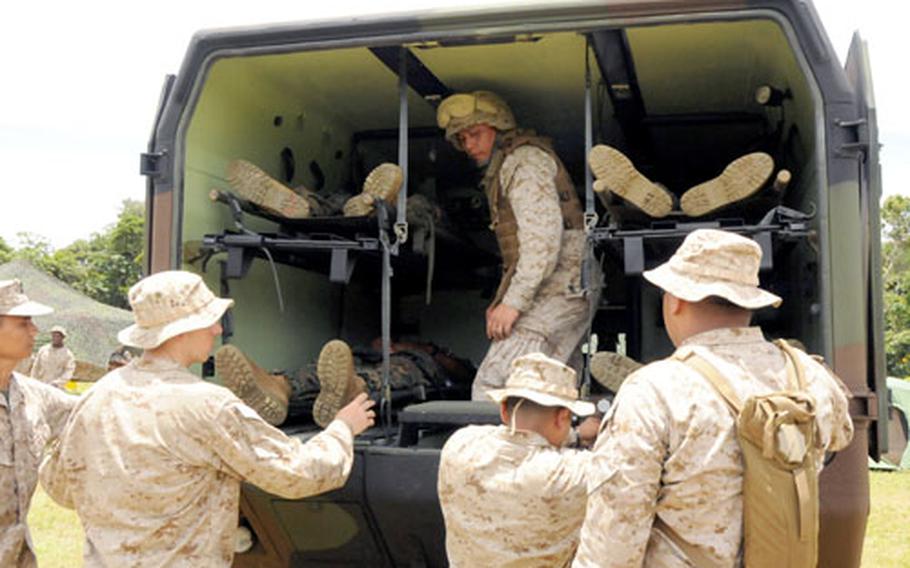
In the back of an ambulance at Landing Zone Whippoorwill, the site of a forward resuscitative suite, Petty Officer 3rd Class Michael Gandionco directs which simulated victims should be unloaded first Thursday during 3rd Medical Battalion's Solar Challenge exercise. The victims were then taken to a triage area, then pre-op, next the operating room and finally a recovery area. The suite also had a tent set up for blood work and x-rays. (Cindy Fisher / Stars and Stripes)
CENTRAL TRAINING AREA, Okinawa — During a weeklong exercise that ended Friday, Navy doctors and corpsmen of the 3rd Medical Battalion practiced the medical skills so vital to saving lives in combat.
The Solar Challenge exercise began Thursday, when the battalion set up medical-aid sites on Camp Hansen. The unit then relocated a shock trauma platoon to nearby Landing Zone Buzzard and a forward resuscitative suite to Landing Zone Whippoorwill near Camp Schwab.
The ability to relocate medical personnel and assets, quickly process wounded to a shock trauma triage to be stabilized and then medically evacuate them to the resuscitative surgical suites farther from the fighting are exactly the skill sets the battalion would use in Iraq or Afghanistan, said Cmdr. Pat Paul, the unit’s commander.
Chief Petty Officer John Livingstone said maintaining those skills is vital because the battalion provides medical support to units in both of those combat zones.